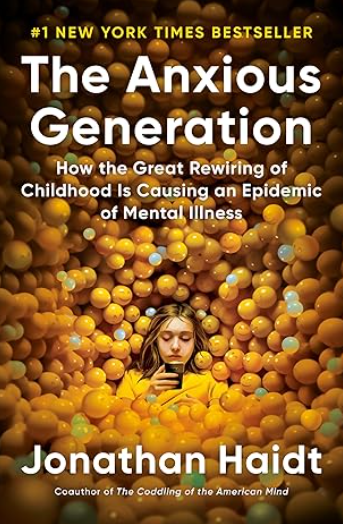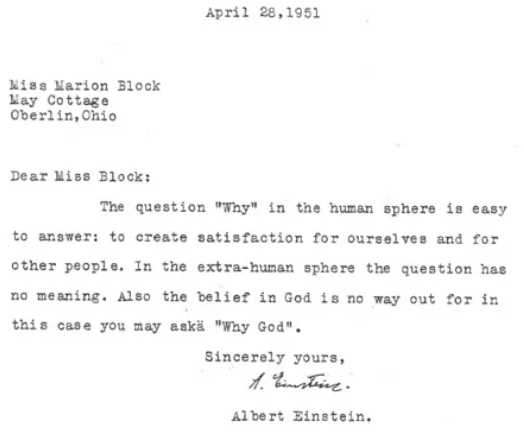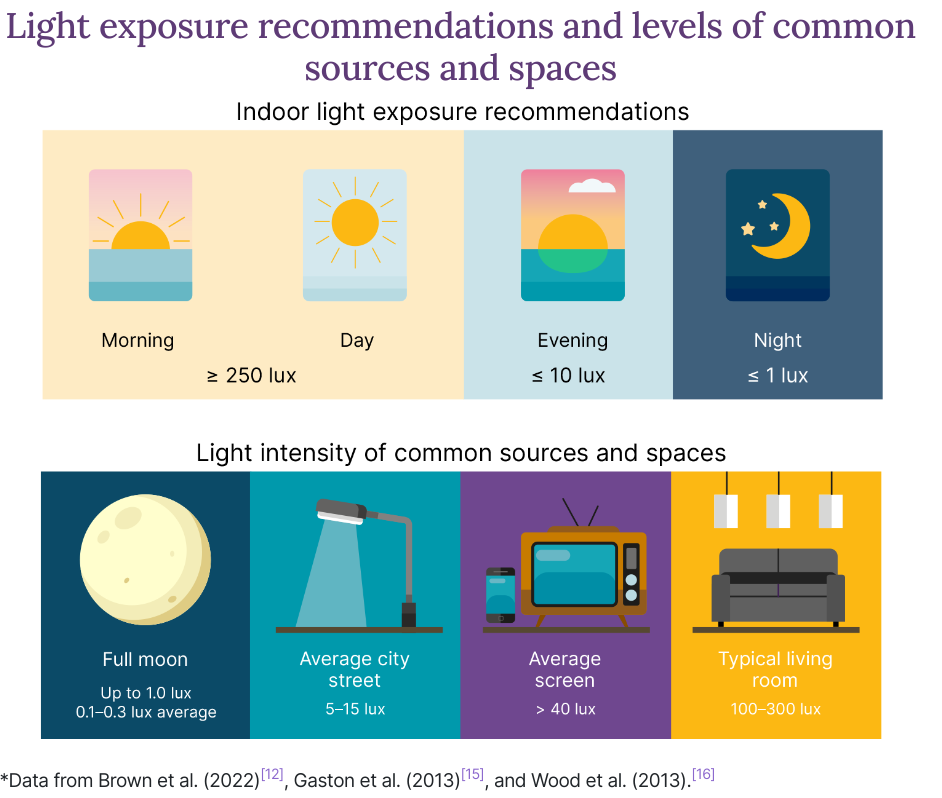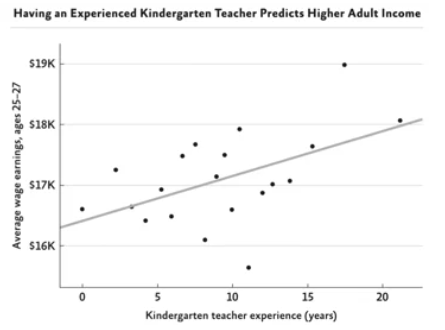May 2024
Put the Glass Down
Hi all,
Stress in short bursts, a term called hormesis, can be great for you. Chronic stress, on the other hand, takes a heavy toll on our minds and bodies. In addition to a plummeting quality of life, it shortens your lifespan by nearly 3 years (even more than a lack of exercise).
I recently came across a powerful analogy that illustrates this point well.
A speaker at a conference raised a glass of water. The crowd lazily expected her to ask the age old question of whether it's half full or half empty. Rather, what she asked was "How heavy is this glass of water?"
The answers range from 8 ounces to 20 ounces.
She said, "The absolute weight does not matter. What matters is how long I hold it for. If I hold it for a minute it's not a problem. If I hold it for an hour I'll have an ache in the arm. If I hold it for a day, my arm will feel numb and paralyzed.
In each case, the weight of the water doesn't change but the longer I hold it the heavier it becomes.
Stressors and worries in life are like that glass of water. Think about them for a little bit and nothing happens. Think about them for a while longer and they begin to hurt. Think about them all day long and you will become paralyzed and incapable of thinking about or doing much else.
Remember to put the glass down.
For acute stress, my favorite strategies are to use breathwork, movement, and cold therapy.
Chronic stress is more difficult. This can be due to a range of issues from PTSD to childhood trauma to being a perfectionist or negative self talker. To "put the glass down" often requires therapy, a change in lifestyle factors or friends, and addressing the six dimensions of health head on: sleep, movement, nutrition, socialization, mindset, and, of course, stress management (see my PDF once you sign up for the MBD newsletter for more details on how to manage these).
If you want a much deeper dive (but written in layman's terms), I recommend reading The Anatomy of Anxiety: Understanding and Overcoming the Body's Fear Response by Ellen Vora MD. My wife first listened to this then bought the book for me and I devoured it
Put the glass down,
Brian
Stuff of the Month
Mind
Body
Dryer Sheets, Non-Stick Cookware, & Toothpaste: 3 Fatal Conveniences
Ecto, Endo, & Mesomorphs: Training For Your Body Type (& Do You Need To?)
Recovering From Antibiotics: The Best Strategies For A Healthier Gut
Non-Toxic Living: Oral Health (Toothpaste, Mouthwash, Floss, & More)
Dad
The Growth Kit (Podcast)
Find the full list of episodes here.
Follow The Growth Kit on Instagram.
Subscribe to your favorite podcast player (Spotify, Apple). And please leave a review!
From One Year Ago
Best Of The Month
Here are some of my favorite things of the month.
Quote
“There will never come a time when you have no problems.
What, did you think that one day you’re just going to wake up and cease having problems?
Like completing a video game and levelling up to a map where there’s nothing there?
That’s never going to happen.
Your problems will change, but having problems is going nowhere.
Dealing with problems is the cost of doing business as a human, not a personal curse.”
-Chris Williamson
Podcast
Ben Greenfield, a former bodybuilder, Ironman triathlete, pro obstacle course racer, human performance consultant, speaker and author of thirteen books, dives into his favorite biohacks.
Book
The Anxious Generation: How the Great Rewiring of Childhood Is Causing an Epidemic of Mental Illness by Jonathan Haidt
I highly recommend this for every parent and any Gen Z’ers. Haidt dives into the reasons why this generation (and maybe everyone from here on out) is different that incliude a swap for play-based childhood for a phone-based childhood. He dives deep into the statistics and provides practical strategies to reduce the symptoms that often come alone with this “great rewiring of childhood” which include anxiety and depression.
Product
I’ve been a fan of rucking (basically weighted backpack walking) for years but it was when I got my first GORUCK Rucksack, the Rucker4.0, that I became booked.
What’s Great About It:
Extremely durable. The Rucker 4.0 is the fourth generation of this backpack which is built to carry heavy things for long periods of time. Its max plate capacity is a 45lb ruck plate and a 30lb ruck plate at the same time.
Ultra-padded shoulder straps. This is especially important if you're just getting into rucking (or traveling with heavy loads).
It has a "Scars lifetime guarantee" which translates to the last pack you'll ever use.
Great compartments. It has velcro compartments to hold the ruck plates in the center of the pack. This is great for your center of gravity and prevents them from jostling around with each step. It's also great if you turn the pack into a weighted workout pack or carry it with the side handle.
Simple design. What you see is what you get. No flare.
Sternum strap. The (removable) clip at chest height allows a good redistribution every so often during longer workouts.
Extra handles. The obvious use of these handles, particularly the side handles to orient it horizontally, is greater ease with carrying it short distances with one hand (think traveling in the airport) but I've also used this to turn the pack into easy exercises like suitcase carries and upright rows. Note: while the side handles are great it technically has 4 handles (sides, top bottom).
Free returns. Hate it? You can send it back within 30 days.
Made in the USA. 'Merica.
Things I’ve Learned
Mind
Multivitamin Can Slow Cognitive Aging by 2 Years
Americans are getting older so by 2016 the number of people to be diagnosed with Alzheimer’s will be double what it is now. A recent study found that multivitamins may be a way to stave this off. Researchers involving over 21,000 older adults assessed the long-term effects of multivitamin-mineral supplementation on late-life cognitive function. Results showed significant improvements in global cognition and episodic memory with a multivitamin, equivalent to reducing cognitive aging by two years.
The takeaway: I look at popping a daily multivitamin as a form of insurance to round out the micronutrients I’m potentially not getting. I use the multivitamin from Performance Lab: NutriGenesis Multi for Men (& Women).
Einstein: “Satisfaction for ourselves and other people.”
After enduring two World Wars, Marion Block Anderson, a college freshman, found herself disillusioned. She penned a letter to Albert Einstein, questioning the purpose of existence. In response, Einstein offered his perspective on the meaning of life.
How to Talk to Anyone
Some of my favorite takeaways from an article by Michael Easter on how to talk to anyone.
Takeaways:
Ask questions. People who thrive at asking questions are shown by research to be more likable and to experience greater success in business, relationships (get more second dates), and life.
Do your homework. Have questions at the ready for people you know you’ll run into.
Ask follow-up questions: "The researchers found that follow-up questions are the most powerful questions we can ask." and "The worst conversationalists, on the other hand, don’t ask follow-up questions."
Switch topics frequently: "Brooks’ research discovered that switching topics frequently leads to better conversation. It keeps both parties engaged."
Ask open-ended questions: Use the soft crowbar: "Tell me more."
Body
How Many Lux Should I Be Getting?
If you’ve been reading this site for a while, you know that light is a powerful thing and the amount and the timing of it can have big effects on our health (I say this as I wear my blue light blockers). A review of studies examined light’s impact on heart rate, blood pressure, and other physiological markers and found that most studies suggest that greater artificial light at night (ALAN) is associated with adverse cardiovascular outcomes, with associations dependent on the duration and intensity of exposure. ALAN's pervasive presence, stemming from both indoor and outdoor sources, poses a significant threat to human health, contributing to changes in behavior, physiology, and fitness.
Examine came up with a good graphic to help determine how many lux are in different forms of light. You can take it a step further and download a free Lux Meter on your phone as well.
Plantar Fasciitis
Beyond stretching for plantar fasciitis
My dad recently experienced plantar fasciitis after a round of golf. In asking friends and the internet to help fix the problem all he heard was stretch in various ways (steps, golf balls, ice). What he didn't hear was anything about addressing the root issue within the posterior tibialis muscle. So, I figured I'd use this opportunity to put a PSA out there since the weather is warming and it's not overtraining season.
Plantar fasciitis tends to result from overworking or overtraining, such as prolonged standing or more-than-usual activity. Weak feet and calf muscles lead to muscle adhesions at specific points at a specific point of the calf, posterior tibialis which attaches to the foot and elongates the plantar fascia and causes the pain. After a brief assessment, we identified the trigger point in his posterior tibialis and I recommended three daily practices:
Applying pressure to the trigger point while moving the ankle in different positions
Massaging the trigger point
Performing instrument-assisted soft tissue mobilization (IASTM), also known as scraping, using basic tools and coconut oil.
While this topic deserves an article unto itself, here are some other basic strategies I suggest:
Continue to stretch the foot but don't rely on it as a "fix."
Once the pain subsides, ditch the insoles and cushiony shoes. The goal is to gradually be able to walk barefoot (or wear minimalist shoes) for an entire day but to get this gradually. See this article for more.
Strengthen the foot and calf by placing a towel on the ground and scrunching it toward you with your toes, pick up objects like marbles and place them into a cup, heel raises, and single leg standing (while you're brushing your teeth for a good routine).
Avoid overtraining and use progressive overload instead. For example, instead of pounding out a 5-mile run, gradually work up to it with prolonged walking and walk-run-walk workouts. Schedule off days as well.
If you're overweight, reduce your weight. Each foot takes on 1-2 times your body weight when walking, 2-4 times when running, and up to 7 times your body weight when sprinting. Each pound lost can have a significant impact on the work your feet need to do.
Additionally, it's important to recognize that issues with adrenal function and elevated stress levels can further exacerbate the condition. Find ways to manage stress and limit aggressive activity when you are having high periods of stress.
Read this article on injury recovery for a much deeper dive.
What We Die From
The most common causes of death in 2019 (the year before COVID). What I see when I look at this: so many of these are preventable.
Dad
Study Reveals Least Nutritious Hour for Kids is the One After Day Care
A recent study reveals that the hour following day care pickup is marked by a notable uptick of sugary and salty snacks among young children, constituting approximately 20% of their daily caloric intake and a significant portion of added sugar consumption. Children are found to be more inclined towards unhealthy foods during this timeframe, consuming fewer dairy products and vegetables.
As stressful as this time can be, you can take advantage of the opportunity for your ravenous kids to instill healthy habits that go beyond the day care years. Provide opportunities (have a variety of food), set limits (this is what is available while dinner is being prepared), and be consistent.
Better after-school snacks for kids: fruit (apple slices, oranges, bananas), cheese, beef sticks, sliced veggies with hummus or guac as a dip, smoothie, make-your-own yogurt Sundae, cottage cheese, and seaweed snacks.
Adult Income Predicted Based on Kindergarten Teacher’s Experience
I was blown away by a stat I recently learned from Adam Grant’s book, Hidden Potential: kindergarten teachers impact students' earning capacity as adults.
Economist Raj Chetty's analysis of a Tennessee study showed students with experienced kindergarten teachers earned significantly more by age 25. This connection persisted across fourth and eighth grades, with students exhibiting qualities like proactivity, prosocial behavior, discipline, and determination, traits fostered by experienced teachers, proving to be more influential than early math and reading skills.
ProDaddy (App)
This is an app I wish I had known about when my kid's babies. ProDaddy is free and loaded with “daddy deep dives” into research, weekly tips, baby updates, and recommended products for dads. Here’s more about it from their site:
“Designed for the modern dad, every week we review a topic that normally takes hours of research for an individual and break it down to an easy-to-digest and humorous summary. The purpose is to save you time on your path to becoming the well-informed and confident dad you want to be. We aim to inspire, educate, and entertain our members on their journey to becoming a modern and successful father.”










